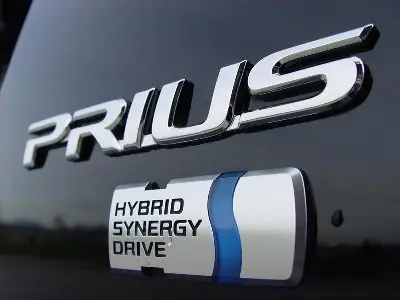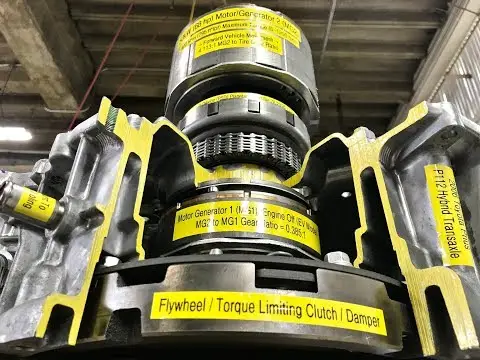
If you have never heard of Toyota, you may be living under a rock. The company that makes the famous hybrid, Prius, has a pretty large following. The question is, what makes the Toyota Prius hybrids such an attractive fleet of vehicles? This one word describes it: durability.
Having worked with hybrids for a while now, we have come to learn that Prius is a rock-solid, hardcore, durable, driving machine. We recently worked with Toyota Prius Hybrids with over 392,000 km on it, and it comfortably did 17 -19 km/l on a road test.
Owning a car with such high mileage is a shock to many people. It is funny actually when the customer came to us and mentioned the mileage on the car to us, our eyes got really wide. Seriously though it is crazy how well built these cars are. We will take a look at a couple of reasons why many of these 2nd and 3rd gen Prius are still on the road. We have later come to realize that many even have far more miles than what we have seen in our shop.
The Toyota Prius is so durable
If you have not read any of our other articles, you may not know this. Prius was designed to be a car that would shape the future of transportation. It was built from the ground up to change everything we knew about fuel economy and sustainability. The Toyota Prius Hybrids had to start off life as a machine that would not break. If it did it should take very few resources to get it back up and running again. Prius had to compete with compact cars that were initially less expensive to build. Prius was more expensive and had more parts when it first rolled out and that really had many people concerned. Toyota was taking a massive gamble at how this new technology would fare, and that gamble paid off.
Prius had to have a rock solid foundation. Toyota engineers knew that the engine, transmission, hybrid battery and all other systems had to be built, tested, improved and worked over again. This car had to withstand the test of time because it had to work if it was truly going to change the future of transportation.
The Toyota Prius Hybrid Engines
The 1.5L 1NZ-FXE Toyota Hybrid engine had to be sturdy. The crankshaft and connecting rods are forged from the factory giving them added strength to withstand some serious abuse. The starting and stopping that these cars do really do a number on the internal components. Toyota thought this through and took an existing proven engine from the Echo (later evolved into Yaris) and placed it in.
The differences between the two engines come down to the cycle in which they run. The Otto cycle is found on the gas-only models, while an Atkinson cycle is found on the Toyota Prius Hybrids. This cycle allows late intake valve closing, allows for an actual simulation of the cycle but gives all the advantages of using it. If you don’t know much about the Atkinson cycle, just know that it aids in fuel economy.
The combination of forging, simulated Atkinson cycle and being an all-aluminum engine, made this power plant win the game. There are other features that also went into making this engine great. For now, though, it is sufficient to know that it was a proven technology that Toyota used in many other cars as well.
Prius Transmission

In 2000 there were two hybrids out. The Honda Insight, and of course Toyota Prius. Honda’s version of a hybrid was neat, and it actually did get higher MPG ratings than Prius, but it was not nearly as practical. Toyota knew that if Prius were to have issues, people would still need to drive them in to get service. That is why when the transmission was built, Toyota used a power split system that allowed the car to run on gas, electric, or both under the right conditions. This meant that if your hybrid battery shot out a P0A80 code, you could still drive the car in to get serviced without having to call a tow truck.
Toyota also utilized two electric motors instead of one, which gave a wider range of possibilities including better regenerative braking. There was also no conventional 12v starter motor. The motor-generator would start the gas engine at a faster rate reducing the amount of fuel needed to crank it over normally. The design was also very rugged. The internal parts such as the input shaft, dual-mass flywheel, and gears were all very heavy duty. They needed to be able to take the abuse. Toyota also utilized fewer moving parts internally which reduced the possibility of failure and increased durability. It was a sure win. Even maintenance on the transmission is very simple. A quick drain and fill of only 4 quarts of Toyota WS Fluid, services that transmission for another 100 to 160k km. Depending of course, on your driving habits.
Toyota Hybrid System and Traction Battery
Even though we are seeing battery replacements all the time, there is something to consider. Many of these Toyota Prius Hybrid owners that are now replacing the battery are doing so well after 320 and sometimes 480k km!
Nickel Metal Hydride (Ni-MH) batteries are a seriously rugged piece of technology. Ni-MH was built to take fast charges and also fast discharges under high load circumstances. Toyota saw the genius in this and used it in Toyota Prius Hybrid. The result was awesome. In fact, Toyota has believed in this battery tech so much, they have hesitated for a very long time to put Lithium-Ion in many of their cars. Toyota will study and research until they have sufficient data to prove how well it will hold up over time. The HV battery was no exception. Even though the very first Prius back in 1997 had round modules in it, Prius in 2000 had a modified version of the Ni-MH battery technology.
To date Toyota still uses these batteries because they can predict how well it will perform over time.
Conclusion
Prius was made to be a legend, and it is. It was designed in all aspects to be durable and rugged because it needed to withstand the test of time, and it has. We would rarely hesitate to invest in a Prius with high miles because we know they are solid cars with many more miles left in them. These are just but a few of the reasons we believe in the Toyota Prius Hybrid and you can contact us..
We hope that this piece gave you a reason to believe in the durability of the Toyota Prius Hybrid. Remember to check out our other story 3 Reasons To Forget Old Fairy Tales And Get A Toyota Prius. See you in the next story where we are highlighting 3 Solid Replacement Options for your hybrid battery. Also don’t miss our latest guide, where we are sharing a checklist to guide you when inspecting a used car.
